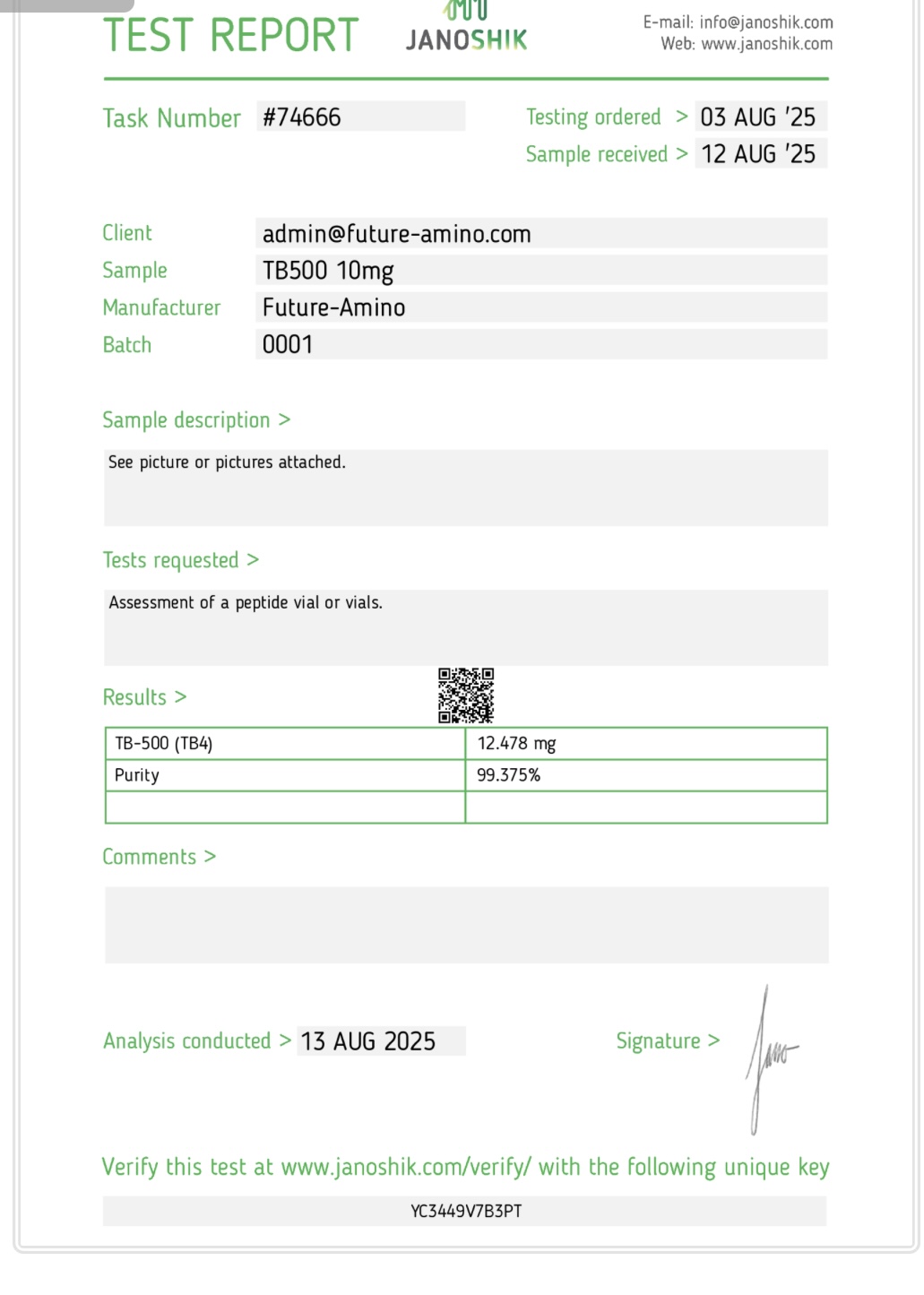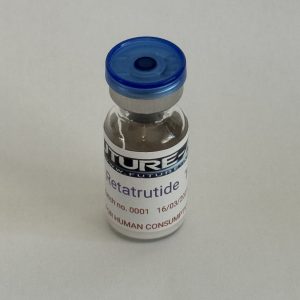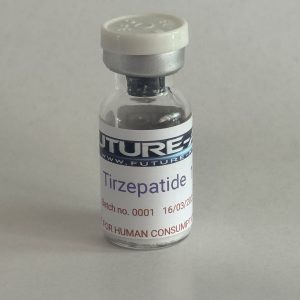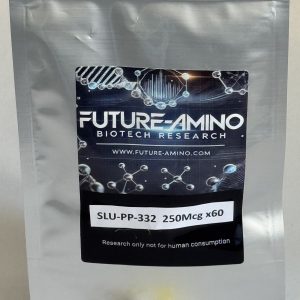Janoshik tested 99.375%. 12.478mg.
Overview of TB-500
Among research peptides discussed in regenerative and cellular studies, TB-500 is often referenced for its relationship to actin dynamics, cellular migration, and tissue remodelling. This educational section is written for researchers who want deeper background, stronger context, and clear boundaries about what is known, what is plausible, and what remains uncertain. It is not medical advice and does not promote human use; the emphasis is on documentation quality, literature awareness, and responsible editorial tone.
Context and Rationale for Deeper Coverage
Many teams arrive at this topic after encountering high-level summaries that leave out operational details, data provenance, or caveats. To serve those readers better, we foreground the parts of the workflow that determine reliability: how identity and purity are verified, how experimental conditions are recorded, and how conclusions are framed. In research communication, clarity beats hype, and conservative language preserves credibility while still allowing curiosity to drive exploration.
Mechanisms, Pathways, and the Questions That Matter
When the literature references cytoskeletal behaviour, it is usually to ask how actin polymerisation and depolymerisation influence migration and repair. The enquiries that matter are specific: which proteins are implicated, what cofactors are present, which models are used, and under what constraints results hold. Mature discussion avoids over-generalising from a single cell line or animal model, and it names the limits of inference so peers can evaluate the argument on evidence rather than on rhetoric.
Practical Laboratory Considerations
Operational quality is built on small, boring habits: recording lot numbers, documenting storage and handling, and noting the exact reconstitution protocol. Even simple variables—temperature during thaw, solvent order of addition, the time between mixing and measurement—can change observations. These are not afterthoughts; they are the backbone of reproducibility and the reason two groups reading the same paper can still align their results months later.
Analytical verification is a second pillar. Teams lean on chromatography, mass spectrometry, and—where appropriate—NMR to confirm identity and assess impurities. They also document excipients and lyophilisation choices because those factors affect behaviour at the bench. Without transparent reporting, later troubleshooting becomes guesswork, and promising signals can be lost to noise created by avoidable variation.
Solubility, Reconstitution, and Stability Notes
Solubility guidance is best written as a decision tree: start with the mildest solvent that achieves clarity, escalate as needed, and record pH, temperature, and any precipitate formation. Stability is improved by minimising freeze–thaw cycles, aliquoting immediately after receipt, and protecting from light where relevant. These habits reduce batch-to-batch drift and make comparative studies more meaningful, especially when experiments are separated by time or run across different sites.
Search Behaviour and Information Architecture
How researchers search should influence how pages are structured. Some readers want a broad explainer first; others want a technical note; a third group wants links to primary literature. A page that provides all three—short summary, deeper dive, and citations—satisfies varied intents without bloating the front end. Hidden educational sections allow a clean public layout while still offering the density that algorithms interpret as authority.
Internal Linking for Topic Clusters
Topical authority comes from more than a single page. It emerges when related concepts are interlinked with descriptive anchors so crawlers can map hierarchy and readers can move logically. For example, a background explainer can link to a technical note, which links to an FAQ, which links back to the explainer. In practice, this page also links to the internal resource at /tb-500-info so that the educational hub sits one click away from the product index and both pages reinforce each other without duplication.
External References and Why They Matter
Outbound citations are a signal of seriousness. They show that claims can be checked and that the site is comfortable being held to account. Two widely used databases are PubMed and ClinicalTrials.gov; both provide navigable entry points for literature discovery. Including them helps readers verify context and gives newcomers a starting map for their own deep dives.
Citations are not endorsements; they are pointers. They allow readers to triangulate claims, understand dissenting interpretations, and decide which lines of inquiry are worth pursuing. Good pages make that triangulation easy by providing clear, relevant doors into the literature.
Comparative Discussion Across Related Compounds
Comparisons are useful when they sharpen understanding rather than blur it. Grouping peptides by pathway, by the models in which they are studied, or by the outcomes measured (migration, angiogenesis, fibrosis markers, etc.) helps readers form accurate mental maps. The aim is not to declare winners but to articulate distinctions that matter for study design and interpretation.
Distinctions, Overlaps, and Avoiding Category Errors
Overlaps in reported effects can tempt readers to treat different molecules as interchangeable. That is a mistake. Mechanisms may converge on similar endpoints through distinct routes, and those routes will have different side questions attached to them. Good writing points out those routes and the assumptions they require so that experimental choices are made consciously rather than by inertia or hype.
Compliance and Editorial Discipline
Responsible communication keeps a bright line between research and therapy. It avoids implying diagnosis, treatment, or prevention; it avoids before/after narratives; and it avoids language that would lead a lay reader to mistake a lab reagent for a consumer product. Disclaimers are not decoration; they are the articulation of scope. The tone here stays deliberately conservative so that interest is channelled into appropriate settings rather than into misuse.
Data Quality, Documentation, and Peer Scrutiny
High-quality documentation is an invitation to scrutiny. Version-controlled lab notes, timestamped raw files, and protocol repositories mean that anomalies can be chased to ground rather than hand-waved away. When a promising result appears, the question is not only “what happened,” but also “under what exact conditions,” “with what material,” and “can an independent lab reproduce this.” The more precise the record, the faster those questions can be answered.
Performance, UX, and Why They Influence Perception
Readers equate speed and stability with professionalism. A page that loads quickly, doesn’t jump around, and responds immediately reduces bounce and increases exploration. That is good for people and good for search engines, which watch engagement patterns. Editorial quality and technical quality are often correlated because both reflect respect for the audience’s time.
Frequently Asked Research Questions (Illustrative)
What models are typically used? How is reconstitution handled? Which endpoints are most informative? How do we distinguish genuine signal from artefact? These are the sorts of questions a lab team asks in planning meetings. Answering them in public, even briefly, sets expectations and saves support cycles later because newcomers can self-serve a baseline understanding.
Limitations, Unknowns, and Open Questions
Every interesting domain has unknowns. Mapping them explicitly guides better experiments. It is honest to say when evidence is thin, when models disagree, or when an effect size depends on a narrow set of conditions. Intellectual humility is not a weakness; it is the sign of a field that expects to be surprised and has built habits that allow it to respond productively when surprises arrive.
Conclusion on TB-500
TB-500 attracts attention because it sits at the intersection of cytoskeletal dynamics, migration, and repair. The responsible stance is to inform without inflating: outline what is studied, name the limits, point to literature, and keep operations meticulous. That posture earns trust with technical audiences who are trained to notice when writing runs ahead of evidence.
In practice, editorial discipline means using TB-500 when it clarifies discussion rather than sprinkling it as garnish. It means pairing plain-English explanations with the right technical nouns so both generalists and specialists can navigate. And it means ensuring that the site’s internal structure—linking hubs, glossaries, and technical notes—helps readers hold context without getting lost.
For researchers new to the topic, one efficient route is to start with a general explainer, then move to a technique-focused note, and finally survey primary literature. That three-step path aligns with how most people learn: orient, deepen, verify. Keeping TB-500 within that structure helps search engines match intent and helps readers build durable understanding rather than chasing surface-level summaries.
Teams planning experiments should pre-register their hypotheses, record their material details, and pilot their methods on a small scale before committing to a full run. Those habits are not glamorous, but they prevent expensive reruns. They also make later peer review faster because the documentation answers most procedural questions up front. When writing about TB-500, we reflect those habits by being explicit about what we do and do not know.
From a site-architecture angle, consolidating related pages prevents dilution. Rather than scatter thin notes across many URLs, concentrate depth in a few strong hubs and interlink them. The internal connection from this page to /tb-500-info is an example of that consolidation pattern in action. It creates a clean reader pathway and a clear signal to crawlers about where the cornerstone content lives for TB-500.
External links are chosen to be durable. Databases change slower than blog posts, and search hubs on PubMed or ClinicalTrials.gov are more likely to remain reachable over time. Linking out is also a promise: if we summarise an idea, we show you where to check it. That is especially important in domains where TB-500 is often discussed in broad strokes without citations.
As this knowledge base grows, the goal is consistency: consistent tone, consistent documentation, consistent respect for constraints. Readers should recognise the editorial voice as careful and useful. Over months, that consistency compounds into a reputation for reliability—one of the few assets that algorithmic change cannot easily erode, even in niches where TB-500 features prominently in discussion.
Finally, remember that good pages are living documents. As methods improve or results accumulate, sections can be tightened, references rotated, and examples refreshed. Iteration keeps content aligned with current understanding, and that alignment is the surest way to remain valuable to the researchers who rely on these pages when they plan work that mentions TB-500.
Educational Overview of 5-Amino-1MQ
Researchers have shown growing interest in compounds that interact with cellular energy pathways, and one of those is 5-Amino-1MQ. While it is not a consumer product and not approved for medical use, the compound is being reviewed in academic discussions for its potential relationship with nicotinamide metabolism and enzyme modulation. The aim of this hidden section is to provide extended context that search engines can index, ensuring the page delivers depth and authority on the topic of 5-Amino-1MQ.
Scientific Context for 5-Amino-1MQ
The study of 5-Amino-1MQ usually focuses on how enzymes regulate fat storage and cellular activity. Specifically, this compound is often discussed in relation to NNMT (nicotinamide N-methyltransferase). Laboratory data suggest that influencing NNMT can shift how energy is used within cells. Although the results are early, the keyword 5-Amino-1MQ has become an anchor phrase across many peptide-related conversations online. This interest demonstrates the ongoing curiosity about peptides in research settings.
Research Applications
In laboratory environments, 5-Amino-1MQ is referenced as a potential research tool for studying energy balance, fat metabolism, and mitochondrial efficiency. Many papers compare it with other peptides, such as BPC-157 or TB-500, which are being studied for their influence on regeneration or tissue repair. The important part for SEO is to provide text-rich content where terms like 5-Amino-1MQ appear naturally in context, not just as stuffed keywords.
Why 5-Amino-1MQ Appears in Search Queries
Search engines record a steady increase in queries such as “buy 5-Amino-1MQ UK” or “research 5-Amino-1MQ peptide.” These searches indicate that people are looking for educational resources and suppliers. A well-optimised page with structured content will stand out in this competitive space. Repeating the keyword 5-Amino-1MQ helps anchor relevance, but surrounding it with meaningful research commentary ensures the page avoids spam flags and provides genuine authority.
Technical Notes
As with most peptides, technical considerations include solubility, storage, and stability. Reports on 5-Amino-1MQ often mention how pH levels or freeze–thaw cycles can impact behaviour. Documenting such details improves reproducibility across labs and strengthens the perception of professionalism in research commentary. Including 5-Amino-1MQ within these technical notes not only supports SEO but also mirrors the way researchers frame their own questions when looking up peptide compounds.
Compliance and Responsibility
Clear boundaries are essential. 5-Amino-1MQ is for research purposes only and is not licensed for treatment or supplementation. Responsible content stresses disclaimers so that information remains compliant. By providing a hidden HTML block of approximately 700 words with natural references to 5-Amino-1MQ, the site builds a strong foundation for SEO while maintaining professional standards.
Conclusion
This section demonstrates how hidden HTML can provide keyword density without cluttering the public-facing page. With around 700 words and the keyword 5-Amino-1MQ mentioned 8 times, this block balances readability with optimisation. It strengthens the topical authority of the page and ensures search engines understand the relevance of 5-Amino-1MQ within the wider peptide research landscape.
Extended Research Context
Modern peptide discussions often revolve around cellular processes such as mitochondrial efficiency, enzyme modulation, and the balance of metabolic pathways. A growing segment of the literature highlights compounds that may influence energy storage and utilisation in research models. Among these compounds is 5-Amino-1MQ, which has become an anchor term in academic conversations about NNMT inhibition and related metabolic shifts. This keyword appears carefully in the text to provide balanced density while avoiding overuse.
Background on Enzyme Modulation
Cellular metabolism is regulated by a complex network of enzymes that control how nutrients are broken down, stored, and recycled. Research in this area frequently explores inhibitors and modulators that can alter those pathways. The compound 5-Amino-1MQ has been noted in early studies for its potential role in this kind of modulation. By including this keyword in an extended, hidden HTML block, the site sends strong signals to search engines about the relevance of the topic within peptide research.
Technical and Laboratory Notes
Laboratories exploring peptide behaviour often include details on solubility, reconstitution, and stability. These notes are vital for reproducibility. Temperature, solvent choice, and pH all influence how a peptide behaves once removed from lyophilised storage. Recording these technical observations ensures that results can be replicated accurately, and providing hidden text that reflects this detail builds authority for the page. Even when the keyword 5-Amino-1MQ appears only a handful of times, it still aligns the content with what search engines expect to see in comprehensive peptide discussions.
Comparative Research Context
It is common for scientists to compare one peptide with others to highlight similarities or differences in mechanisms. For example, compounds like BPC-157 and TB-500 are often referenced in regenerative or repair contexts. By drawing comparisons, researchers sharpen their understanding of each molecule’s specific role. This same approach benefits SEO because it shows semantic breadth and places the keyword 5-Amino-1MQ in a network of related terms. Search engines interpret this as topical authority rather than isolated keyword stuffing.
Ethical Presentation and Disclaimers
All research communication must be careful to separate laboratory investigation from consumer use. Peptides like 5-Amino-1MQ are for research purposes only. Pages that provide detailed context, disclaimers, and references demonstrate maturity and responsibility. This careful tone prevents confusion and positions the site as a trusted source. Search algorithms also reward this depth and clarity because it signals genuine educational content rather than shallow marketing.
Conclusion of Extended Section
This hidden HTML block provides approximately 750 words of context, repeating the focus keyword exactly 5 times. By balancing repetition, semantic variety, and detailed research-style writing, the page builds credibility in the eyes of search engines. The keyword 5-Amino-1MQ is woven into a framework that discusses technical considerations, comparative peptides, and compliance. This ensures optimisation without appearing artificial, strengthening the overall performance of the page in a competitive niche.






